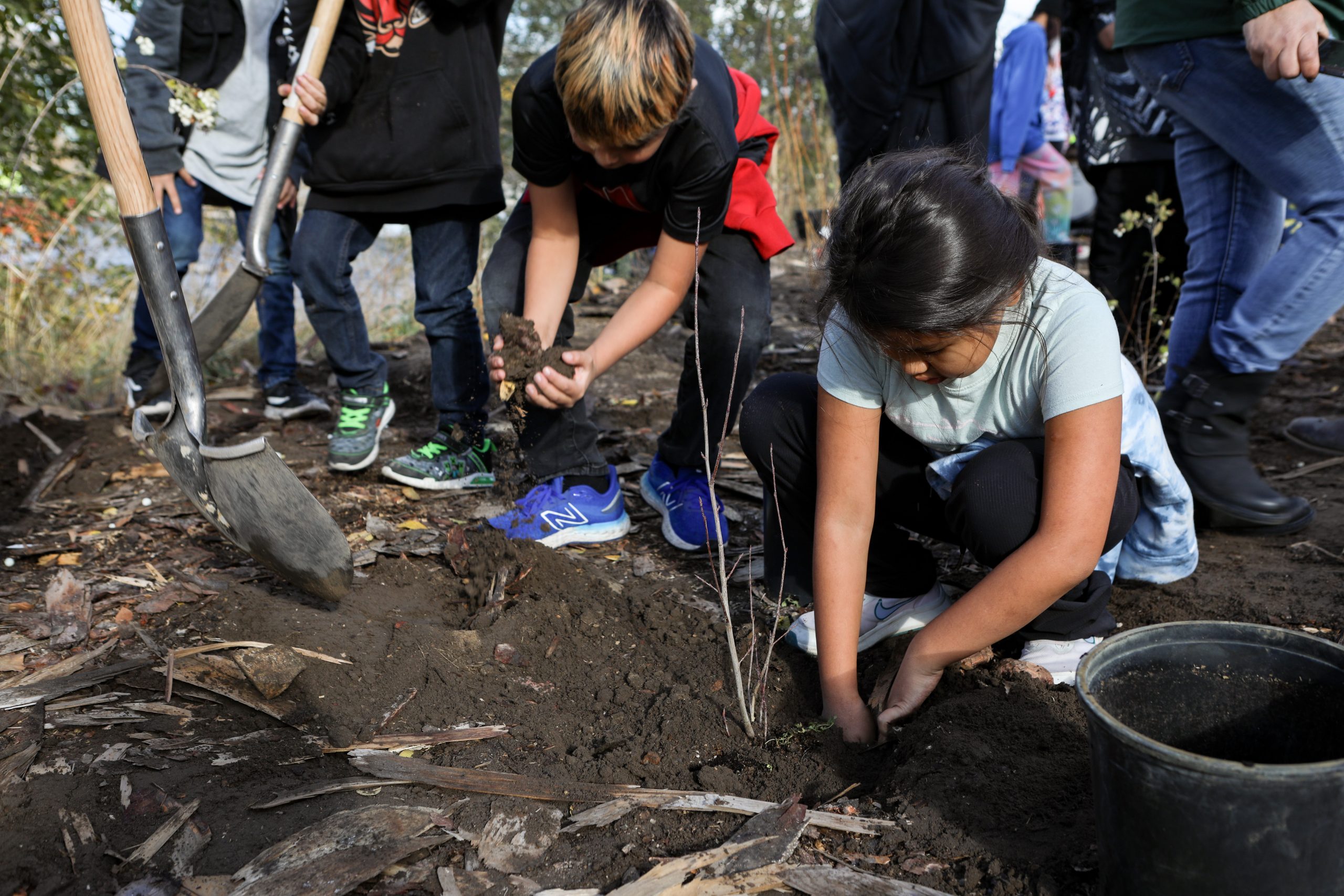In Maskwacis, Pope Francis apologizes to crowd of Indigenous survivors
‘I humbly beg for forgiveness,’ the Catholic leader said on the first stop of ‘pilgrimage’ within Treaty Six territories

Content warning: This article contains details about residential ‘schools’ and abuse at the hands of the Catholic church. Please read with care.
In the homelands of Maskwacis, Pope Francis sat in front of several thousand people — many of whom survived abuse at the hands of the Catholic church — and delivered an apology.
“I humbly beg for forgiveness for the evil committed by so many Christians against the Indigenous Peoples,” he said, according to a translation.
“I ask forgiveness, in particular, for the ways in which many members of the church and of religious communities co-operated, not least through their indifference, in projects of cultural destruction and forced assimilation promoted by the governments of that time, which culminated in the system of residential schools.”
Pope Francis’s address on Monday — delivered in his native Spanish and then read in English by a translator — was met with mixed reactions. Many people in the crowd cheered when they heard the pope’s translator say the words “I am deeply sorry.” Some wore skeptical expressions as they watched the address, some looked solemn, and others broke into tears.
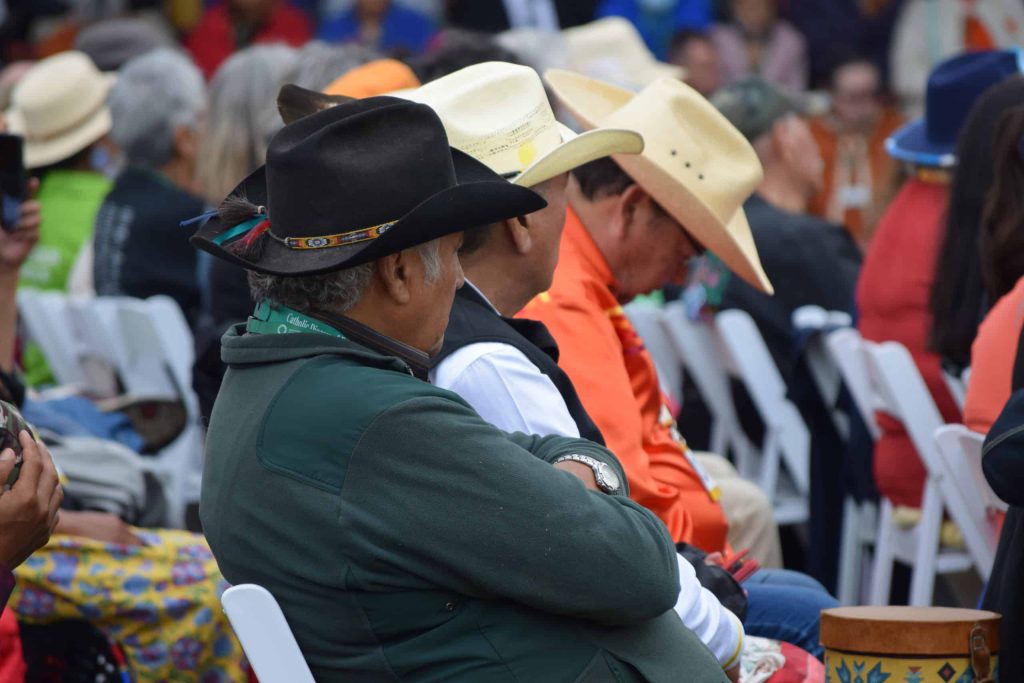
On social media, people also reacted with mixed emotions, from rage to relief. Some described being triggered by seeing the head of the Catholic church on lands where the institution has caused deep harm to Indigenous families.
The gathering at Maskwacis was the first public gathering attended by Pope Francis after he arrived in “Edmonton” on Sunday as part of his trip to “Canada.” The trip, between July 24 to 29, involves planned visits in Treaty Six territory, Iqaluit and around “Quebec City.”
Pope Francis acknowledged that he received invitations to various other places in the country including Secwépemc homelands, where the uncovering of 215 unmarked children’s graves in “Kamloops” unleashed an international reckoning around residential “schools.”
“Know that I am aware of the sufferings and traumas, the difficulties and challenges, experiences by the Indigenous Peoples in every region of this country,” he said. “The words that I speak throughout this penitential journey are meant for every native community and person.”
The trip comes just a few months after Pope Francis met with a delegation of Indigenous Peoples at the Vatican from March 28 to April 1, and is being called a “penitential pilgrimage” to try to make amends after what he heard from them about the damages caused by the church.
Church and state-run residential “schools,” as well as other institutions such as day “schools,” were run by the church and state and designed to assimilate Indigenous children. The Truth and Reconciliation Commission estimates 150,000 children were stolen from their homes and forced into residential “schools.” Most suffered severe physical, emotional and sexual abuse — and many didn’t make it home.
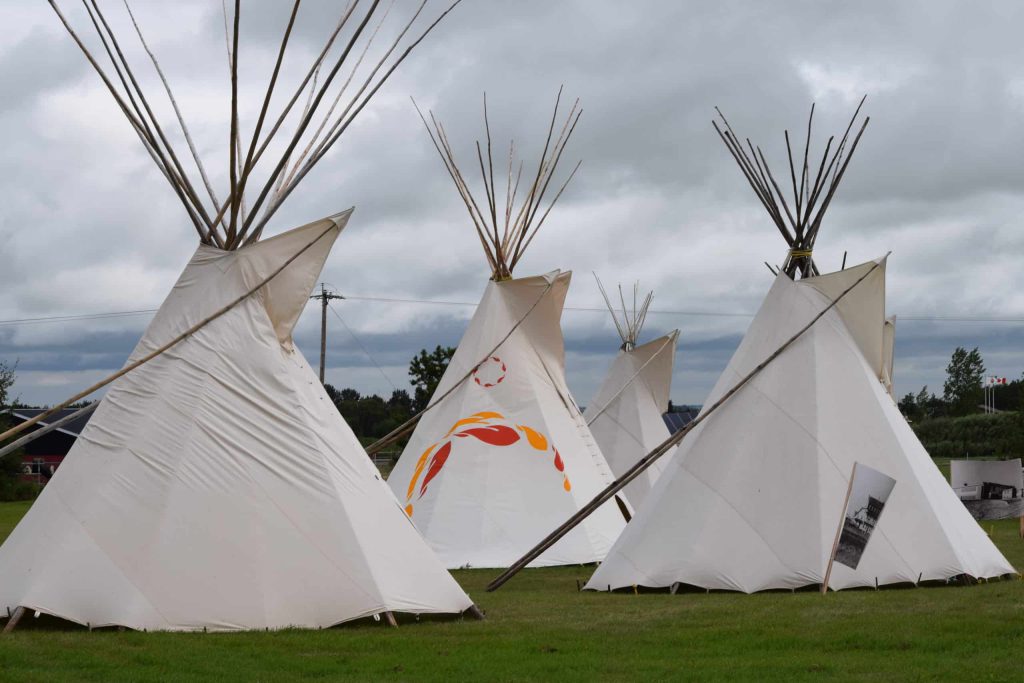
Entering Bear Hills
The nation of Maskwacis (Bear Hills) encompasses four communities — Louis Bull, Montana, Samson and Ermineskin. The pope’s visit began at the Ermineskin Cemetery, where he was pushed in a wheelchair along a paved side road. He then stopped to pray and overlook the site.
While hundreds of graves are marked, it is understood that there are also many unmarked graves of children who attended the residential “school” nearby.
The former Ermineskin Indian Residential School was one of the largest in the country and once sat across from the cemetery. Now, where the institution once stood, there are five tipis, where Pope Francis also paused to reflect. He was joined by several Maskwacis chiefs who then walked alongside the leader to the Muskwa Park arbor.
Once there, the pope was welcomed with a Grand Entry involving a number of Indigenous representatives from communities across the country. A large banner was flown, printed with the names of 4,120 children who never came home from residential “schools.”
While many high-profile figures were present, including Prime Minister Justin Trudeau, only Pope Francis and the event’s host addressed the audience.
In his address, the pope acknowledged that an apology on its own is not adequate, and made a commitment to find concrete ways to act on it, though he did not make any clear steps known.
“Dear brothers and sisters, many of you and your representatives have stated that begging pardon is not the end of the matter. I fully agree: that is only the first step, the starting point,” said Pope Francis in his address.
“An important part of this process will be to conduct a serious investigation into the facts of what took place in the past and to assist the survivors of residential schools to experience healing from the traumas they suffered.”
At the end of his address, Pope Francis was presented with a bonnet by Chief Wilton Littlechild, triggering an eruption of cheering as the Catholic leader briefly wore the elaborately beaded feather headdress with his robes.
In a press conference with chiefs and survivors following the event, Elder and Survivor John Crier, of Samson Cree Nation, explained that giving a headdress is a way to honour the pope and the leadership work that’s being done.
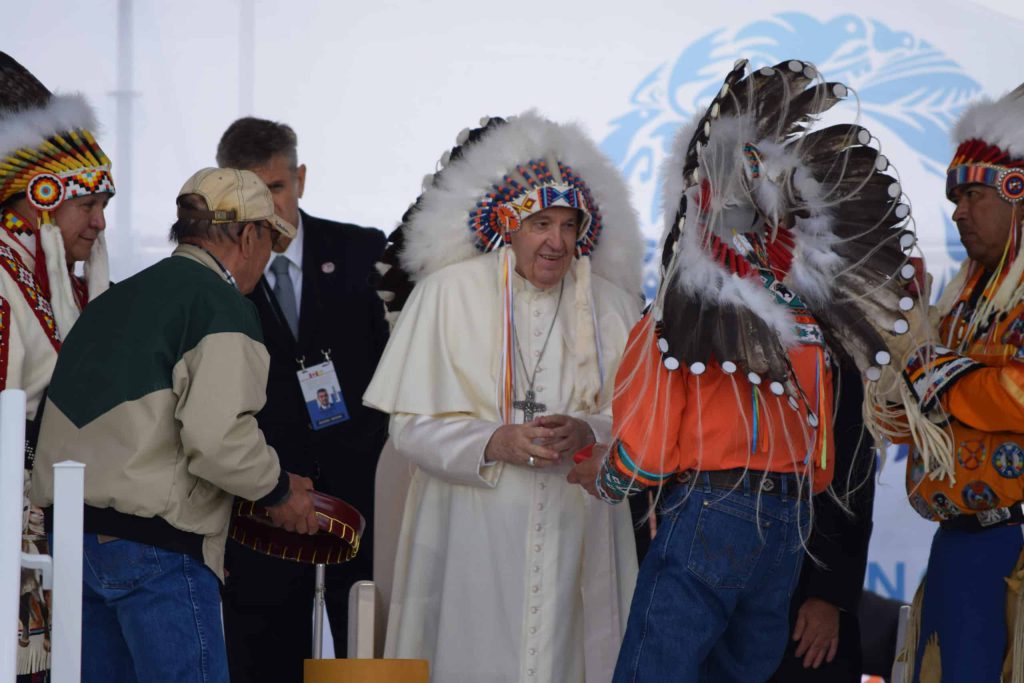
Unpacking the apology
Ermineskin Cree Nation Chief Randy Ermineskin shared that when he sat on stage beside the pope, he thought about his late brother, who attended the residential “school” in the community and took his own life when he was just 17.
“I was emotional up there, as soon as I got up there facing the people who came to hear an apology, my heart broke,” said Ermineskin, who is also a survivor.
“About 80 per cent of my former classmates are in their graves. … I promised them that I would be their voice, I promised them that I would go out there and tell the truth.”
Ermineskin said he is still dealing with his own healing process, but one of the most important things to hold on to is hope.
“Mark this day as a significant event,” he said. “A statement was made, that the pope said he was sorry. That is going to send a message across these lands, these waters … the world heard it.”
Samson Cree Nation Chief Vernon Saddleback said there were a lot of survivors in his community that were looking forward to the apology from the pope because it is an important part of their healing. He said he was glad that Pope Francis was the only speaker because he didn’t want the impact of the event to become watered down.
“Him coming to apologize is historic, it’s important,” Saddleback said.
“Sometimes we need to sit back, and we need to listen. … today was a day for everyone in the world to sit back and to listen.”
Evelyn Korkmaz, a survivor of St. Anne’s Indian Residential School, said it was a very emotional day for her.
“Pope Francis said today that he wanted to walk, pray and work with us, to seek justice, truth and reconciliation,” she said.
“Today I heard an apology, I was hoping to hear some kind of workplan, how he is going to reconcile.”
Korkmaz said she is hoping that when Pope Francis travels to “Quebec” in the coming days, he will have more specific information to share about how he plans to act to find justice for her and other survivors. Specifically, she is hoping for the release of residential school records from the Vatican to “Canada.”
“I’ve waited 50 years for this apology, and finally today I heard it,” she said.
“Part of me is rejoiced, part of me is sad, part of me is numb. But I’m glad I lived long enough to have witnessed his apology. But … I want more. Because 50 years is too long to wait for an apology.”
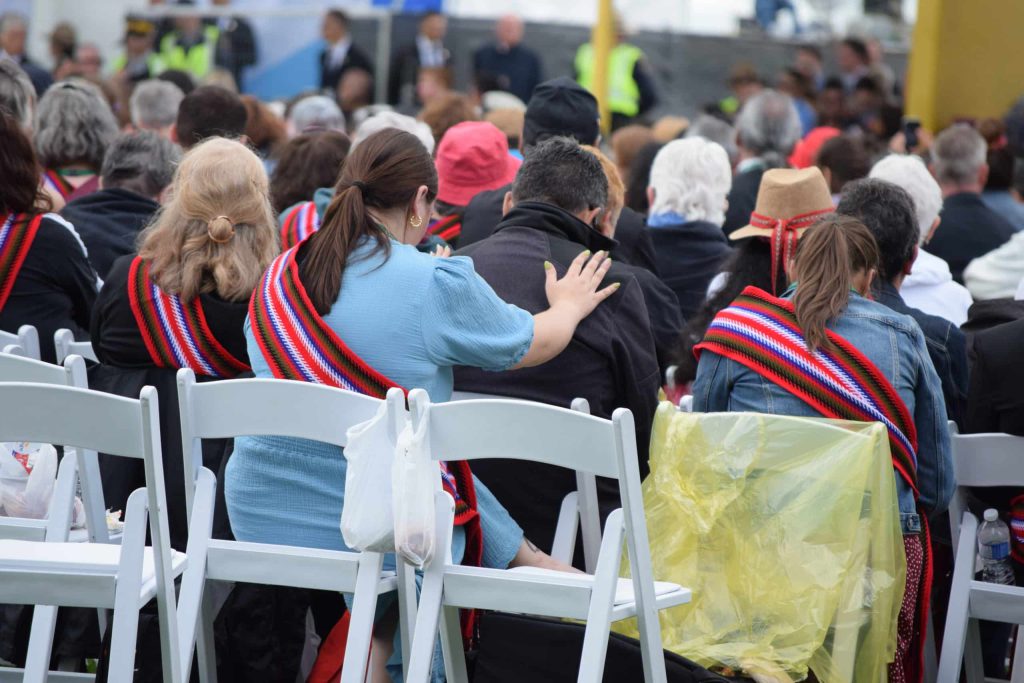
Editor’s note: This is a corrected story. A previous version incorrectly stated that the former Kamloops residential “school” is located in syilx homelands. In fact it is located in Secwépemc homelands. We apologize for the error.
Author
Latest Stories
-
‘Bring her home’: How Buffalo Woman was identified as Ashlee Shingoose
The Anishininew mother as been missing since 2022 — now, her family is one step closer to bringing her home as the Province of Manitoba vows to search for her
-
Amid climate impacts, leading Secwépemc firekeeper shares ‘a better way of looking after the land’
In a time of worsening wildfires, Joe Gilchrist says cultural burning ‘needs to be multiplied hundreds of times’ — returning to Indigenous stewardship




